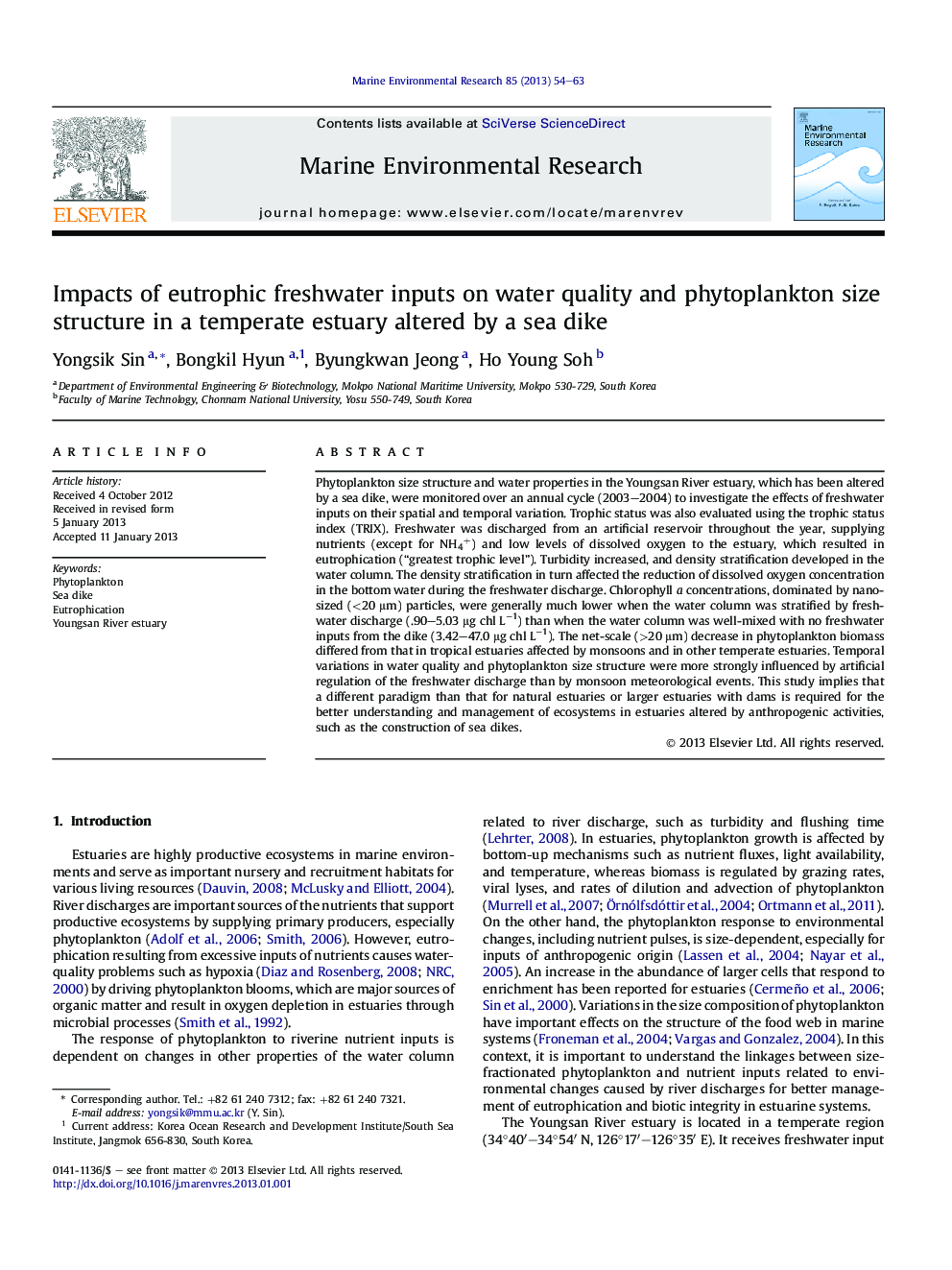| Article ID | Journal | Published Year | Pages | File Type |
|---|---|---|---|---|
| 4550889 | Marine Environmental Research | 2013 | 10 Pages |
Phytoplankton size structure and water properties in the Youngsan River estuary, which has been altered by a sea dike, were monitored over an annual cycle (2003–2004) to investigate the effects of freshwater inputs on their spatial and temporal variation. Trophic status was also evaluated using the trophic status index (TRIX). Freshwater was discharged from an artificial reservoir throughout the year, supplying nutrients (except for NH4+NH4+) and low levels of dissolved oxygen to the estuary, which resulted in eutrophication (“greatest trophic level”). Turbidity increased, and density stratification developed in the water column. The density stratification in turn affected the reduction of dissolved oxygen concentration in the bottom water during the freshwater discharge. Chlorophyll a concentrations, dominated by nano-sized (<20 μm) particles, were generally much lower when the water column was stratified by freshwater discharge (.90–5.03 μg chl L−1) than when the water column was well-mixed with no freshwater inputs from the dike (3.42–47.0 μg chl L−1). The net-scale (>20 μm) decrease in phytoplankton biomass differed from that in tropical estuaries affected by monsoons and in other temperate estuaries. Temporal variations in water quality and phytoplankton size structure were more strongly influenced by artificial regulation of the freshwater discharge than by monsoon meteorological events. This study implies that a different paradigm than that for natural estuaries or larger estuaries with dams is required for the better understanding and management of ecosystems in estuaries altered by anthropogenic activities, such as the construction of sea dikes.
► The effects of freshwater inputs from a sea dike on a marine environment were analyzed. ► Nutrient levels increased, whereas dissolved oxygen and chlorophyll a decreased. ► Smaller-sized phytoplankton biomass increased with the eutrophic freshwater inputs. ► Water column processes related to the inputs differed from those of natural estuaries. ► Rapid changes in flushing and salinity can decouple the eutrophication–phytoplankton linkage.
